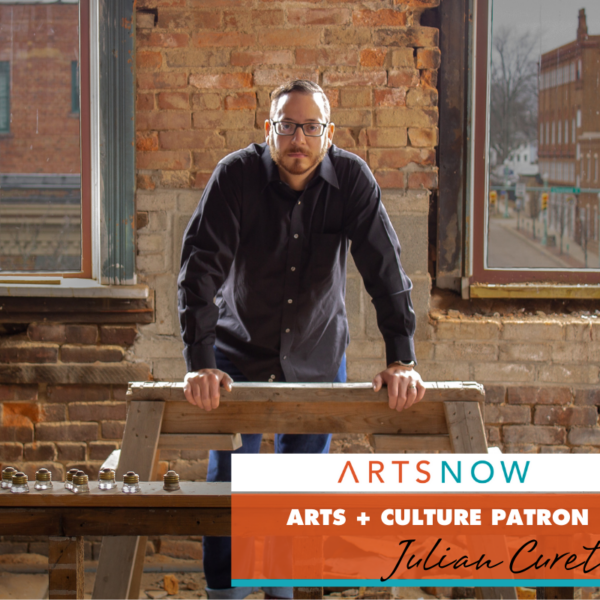
Arts & Culture Patron: Julian Curet
The Future of Akron’s Culture is Exciting
A Black man in a Beatles mop-top wig playing “Hard Days Night” on a beat-up guitar as the subway pulled into the station and the exchange of passengers began. The collective breath of a group of Peruvian flutes drowning out the impatient honks of yellow cabs, carrying a condor over the mountains from a blanket spread between a fire hydrant and a parking meter. A lone saxophone soulfully echoing around the tunnel leading to what seemed like the biggest fountain in the middle of the biggest park I had ever seen. These are just some of the memories I have of the arts permeating the streets of my childhood home in Manhattan. I remember countless paint bucket percussionists, breakdancers, and many other artists collecting change from their audiences. These experiences informed my desire for the street-level accessibility of human expression. They play an important part of why I am a musician today.
However, in recent years, I find myself looking past my own consumption of these pieces of life and into the faces of the life givers. This perspective leads me beyond the creation wanting to know who the creator is and the role they play in the community. At the end of this path, I find a question that often goes unanswered or ignored. Why shouldn’t every surface of the places where we live, work and play be oozing with the very spirit of the people who call those same places their home? The answer to this question is a beautiful abstraction of voices, bodies, and ideas that has the potential to knit our individual journeys together resulting in a stronger and enduring fabric. The work involved in getting there is why I am an arts administrator.
Luckily, I have started my career around the same time that many others, already in the field, have begun exploring the questions of accessibility and representation. While larger institutions, such as museums, classical music halls, and other bastions of the “West” have been struggling with diminishing audiences and memberships, smaller organizations have taken up the work of expanding prevailing perceptions of what is art and who makes it (spoiler alert: everything and everyone). So, as the tiny rudders of these huge ships struggle to change their course, smaller organizations are building speedboats that go further inland to where the people are, to where the questions of accessibility and representation were already being discussed long ago.
The subversive nature of this work can be difficult but rewarding, resulting in the silent respect for the high and classical slowly giving way to a more interactive and personal sharing of culture. This work means creating a platform that, to paraphrase Toni Morrison, stands at the border and claims it as the center. Too often, “culture” is thought of as the “exotic,” something mysterious. Quite the opposite. Culture is ubiquitous. In simple terms, culture is what is created, learned, believed, and taught within any group of people. And, it is always changing. Everyone takes part in a system of culture. Therefore, everyone has it and everyone can share their own. Yet, our experiences as people in this world are more than the things hanging on walls, sheets of music, books on shelves, or even bodies moving across a stage. These experiences have built our worlds, our societies. We must continue building on all of those experiences and learning from them. We should not separate the people from the art or the culture. A positive trajectory for any community would involve edification rather than reification. This is where the Akron Cultural Plan comes in.
You most likely have heard or read about the Akron Cultural Plan a few times by now. But, it is exciting. The Akron Cultural Plan is a sort of agreement hammered out by the community for the community. Its creation involves representatives from the larger flagship institutions who have recognized the need to widen the scope of their missions. It includes the medium and smaller organizations and businesses, as well as the people from all the different parts of Akron. As an arts patron and administrator, it is very exciting to imagine what could result from presenters and creators, large and small, and all of their stakeholders, all over Akron, considering the potential accessibility, representation, and environmental impact of their next performance or exhibition. Imagine arts administrators on every level thinking about their missions in this way. It is a responsibility that has been collectively debated and agreed upon. It goes beyond a mandate. The Plan’s guiding principles are meant to be taught, learned, believed, shared, and contested. Let it become Akron’s culture. Let it be the loom on which we weave our journeys together.